
LEAPX AR Glasses
In August 2021, the LEAPX team received an invitation from a confidential brand to design a high-performance, professional-grade AR (Augmented Reality) headset.
Strategy | Industrial Design | Visualization

In pursuit of a bigger Field of View (FOV) and lower production cost, the project used curved mirror reflection method for its display. This optical solution requires some distance between the screen and the mirror to work well, so AR devices employing this display method often exhibit a bulky appearance.



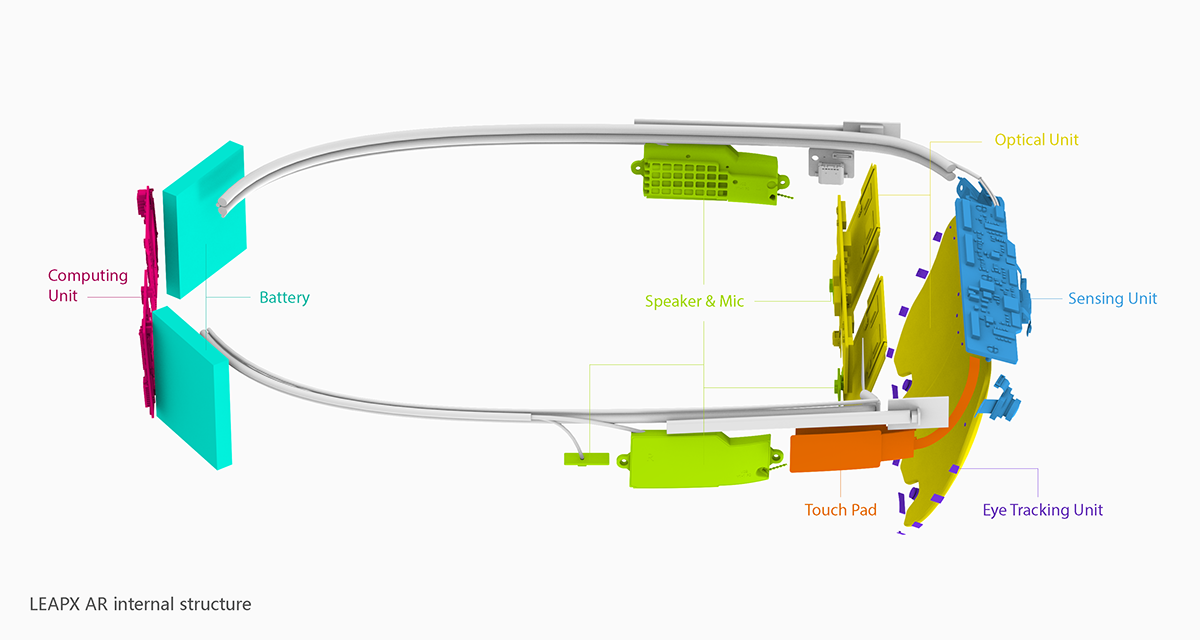
To enhance interaction with the real world, many sensors were integrated into the frontal region, such as SLAM module (a depth camera, two fisheye cameras, and two infrared sensors for gesture recognition) and eye-tracking module. Operating these modules generate significant amount of heat and requires a large battery.
Under these restrictions, what’s the best way to arrange all the components to optimize functionality and performance, provide enough heat dissipation capability, ensure wearing stability and comfort, while have a lightweight and beautiful styling all at the same time?
These are the design challenges LEAPX team would need to solve for this project.
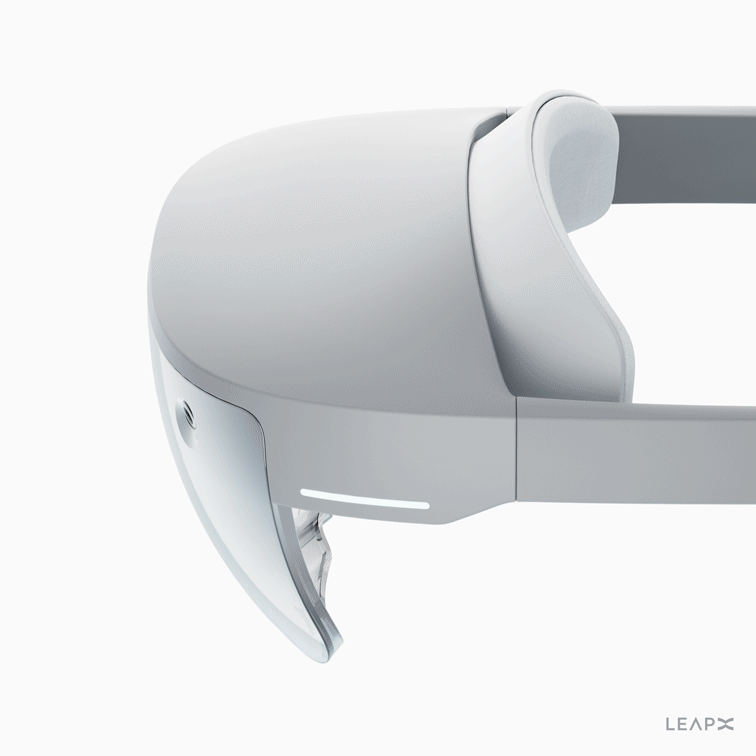
After design exploration, we discovered that by hollowing out the frontal portion of the LEAPX AR glasses, integrating the screen with the forehead support and let it “hover” at the center, not only substantially reduced the bulkiness of the device, but also increased the surface area and improved airflow within the hollow space, greatly enhancing its heat dissipation capabilities.



We placed the battery & computing module at the back to balance the weight of the front end and improve comfort for wearers.

Battery & Computing Module

For ease of touch control, the touchpad is positioned on the front, allowing peripheral vision to assist fingers in locating the touchpad. Protruded dots texture has also been added to give tactile feedback when using the touchpad.


The forehead support features magnets and can be replaced/changed easily.

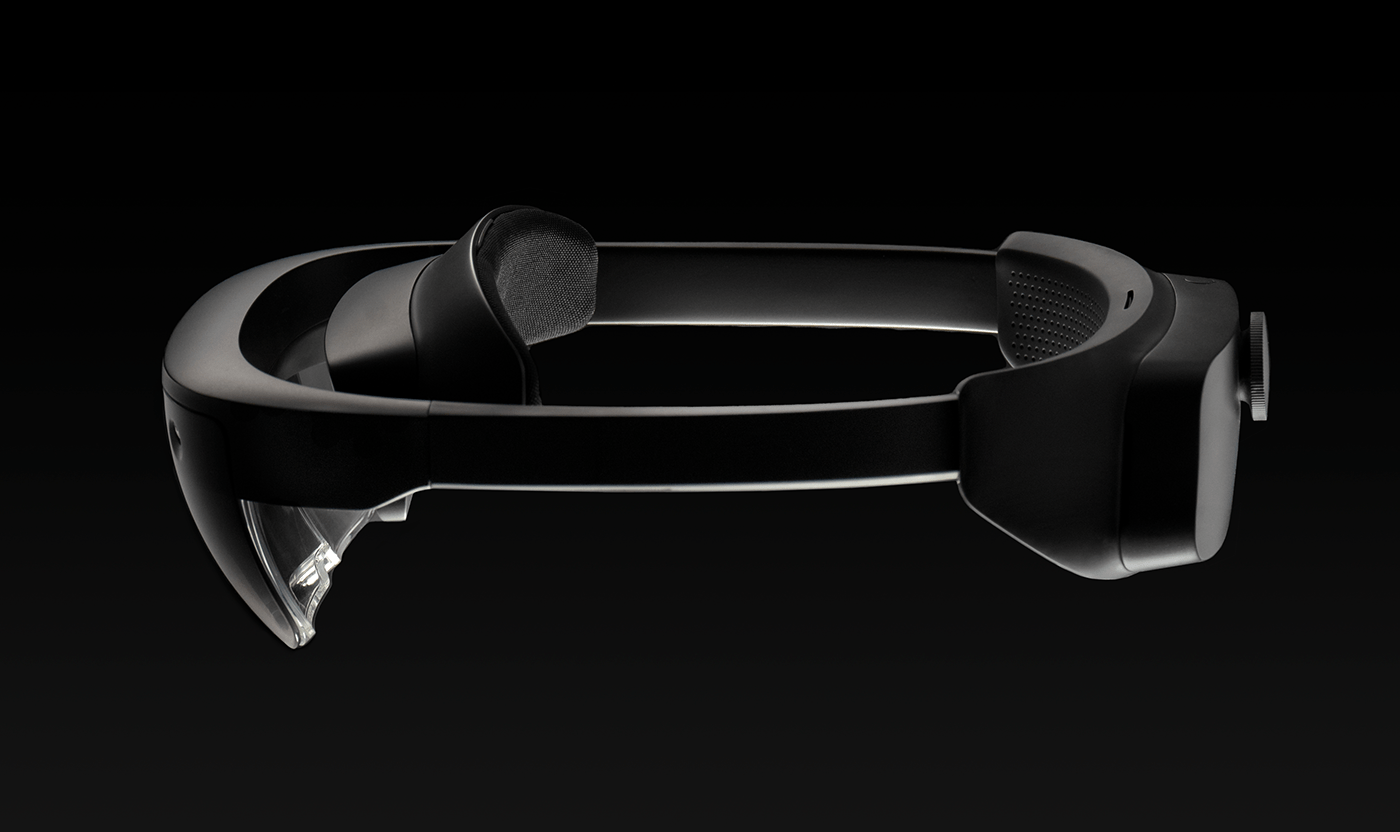
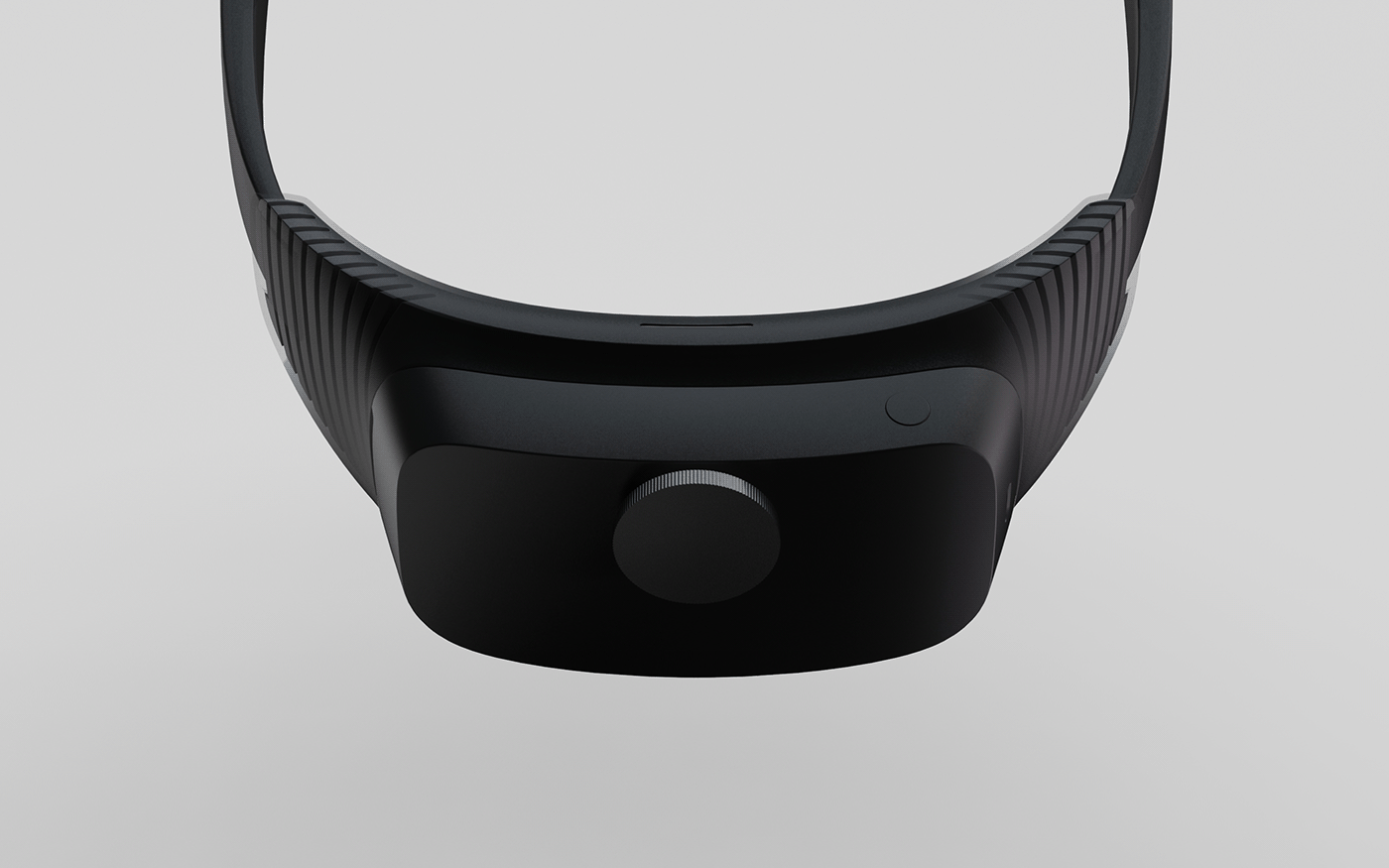
Head shapes vary from person to person. To increase the contact area with the occipital bone to better distribute the pressure, we widened the rear head support as much as possible. Internally, we've incorporated a "fishbone" support structure to accommodate various head contours. The central knob is used to adjust for different head circumference.

Considering some users may need to wear the device for extended periods, an optional top headband accessory is available to distribute pressure away from the forehead and occipital bone.

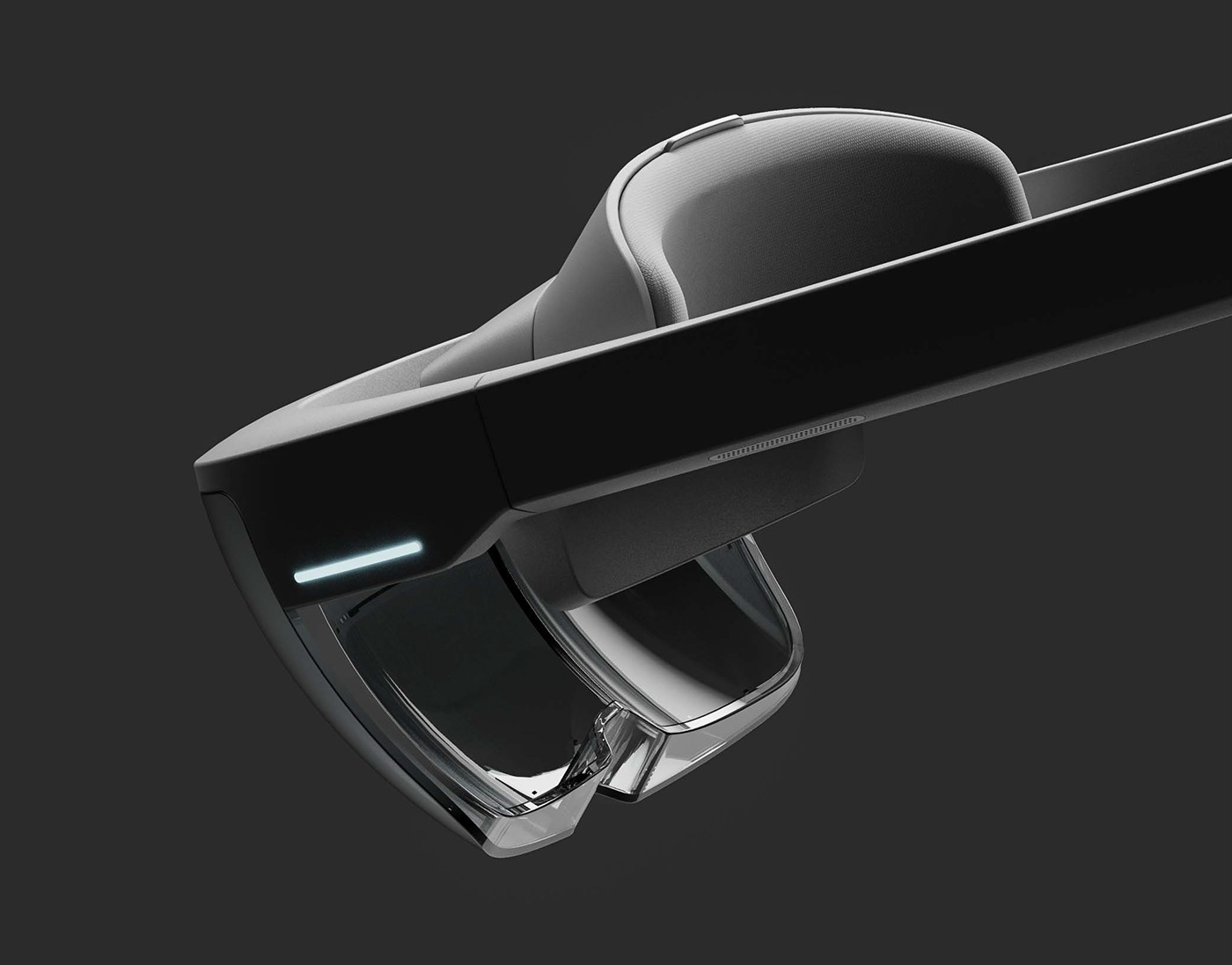
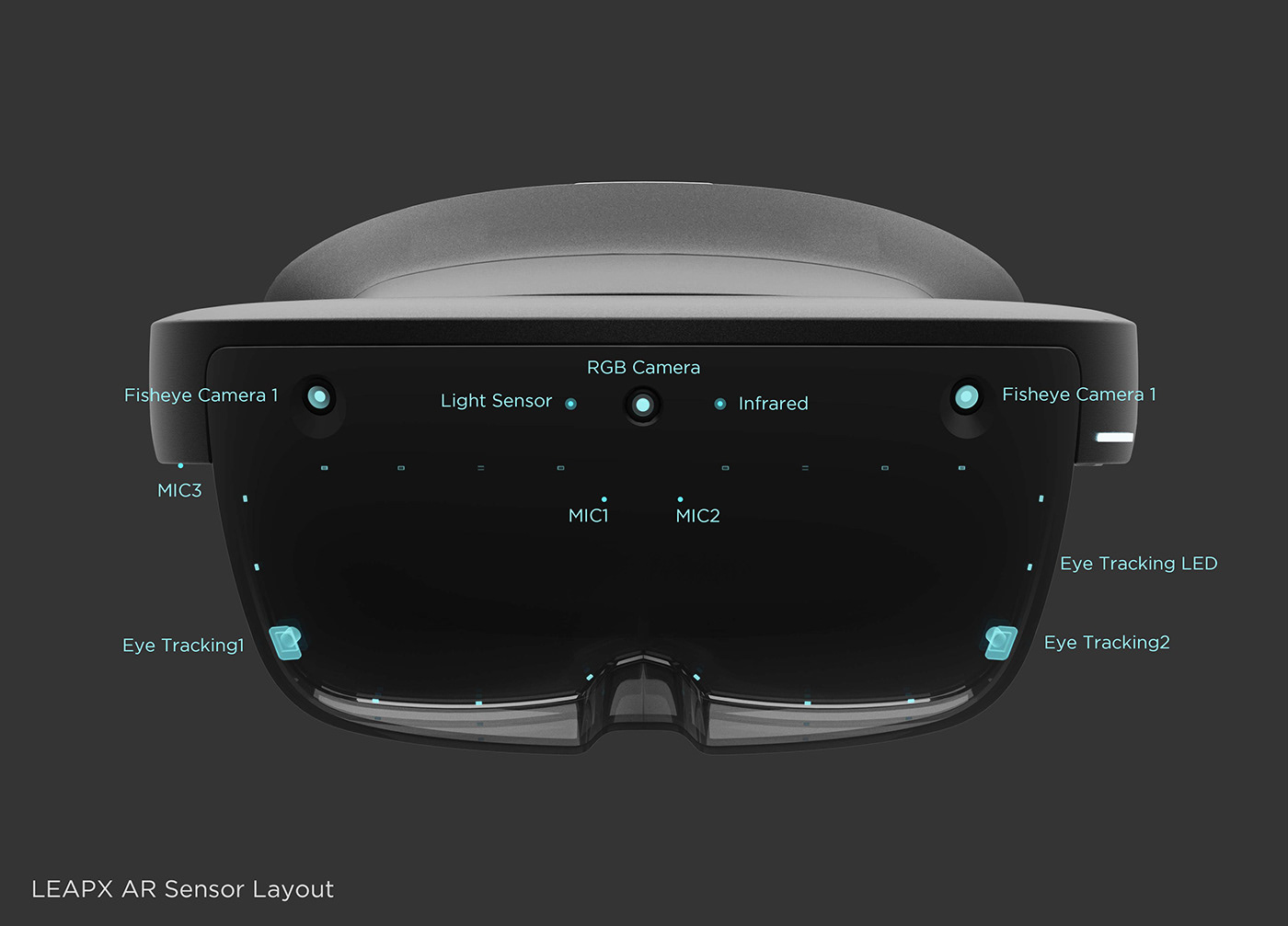
To enhance interactivity with the real world and the user, the front of the glasses is equipped with a depth camera, two fisheye cameras, two eye-tracking cameras, a light sensor, an infrared illuminator for hand gesture recognition, and eighteen infrared eye-tracking lights.

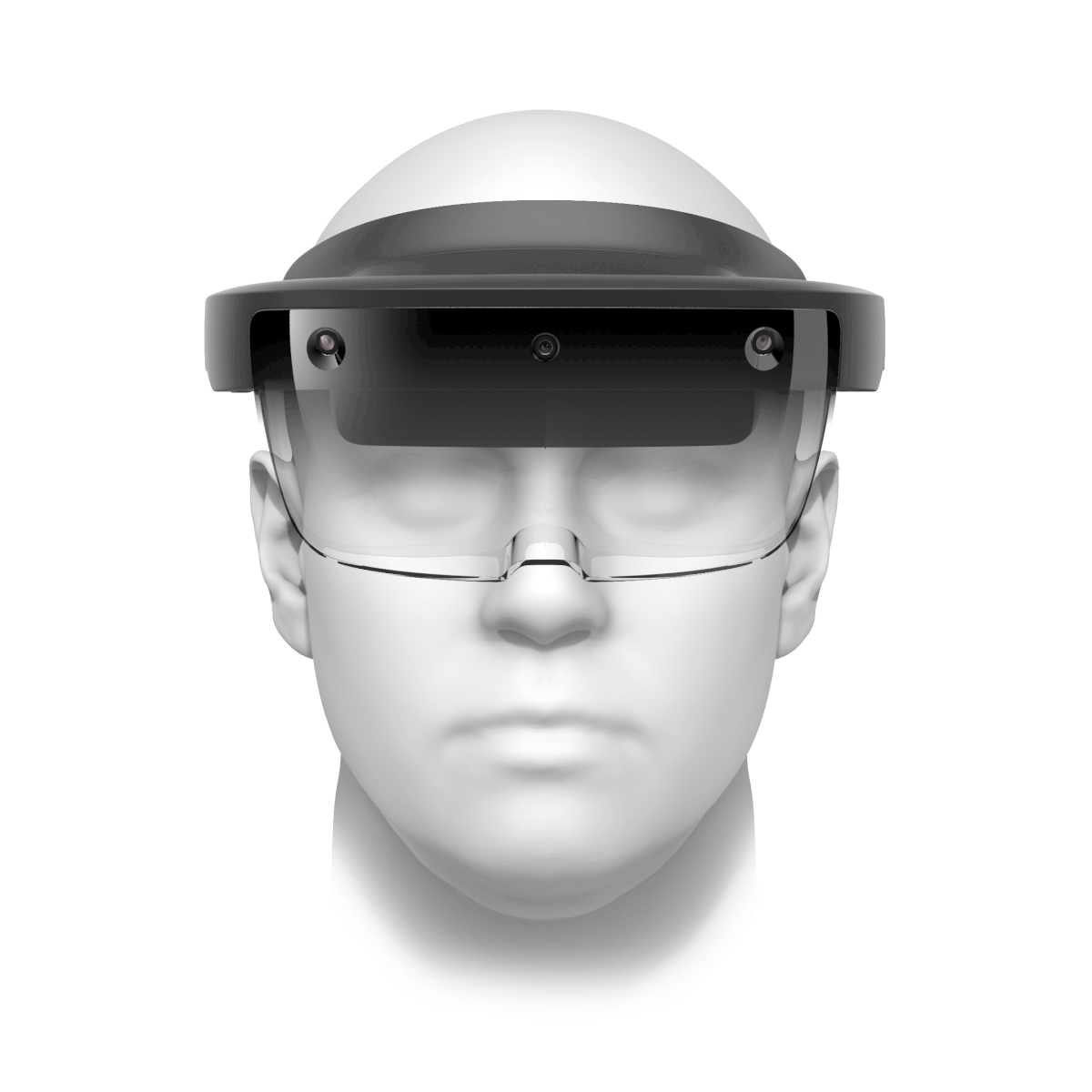
For an AR headset, real world and virtual imagery holds equal importance. By employing electrochromic film technology, LEAPX AR can automatically adjust light transmission based on ambient lighting conditions, ensuring an optimal display of the interactive interface when transitioning between indoor and outdoor environments. This technology also facilitates mode switching: darken the glass to maximum for an immersive experience in VR mode or increasing it in transparent mode to reduce visual interference with the real environment.


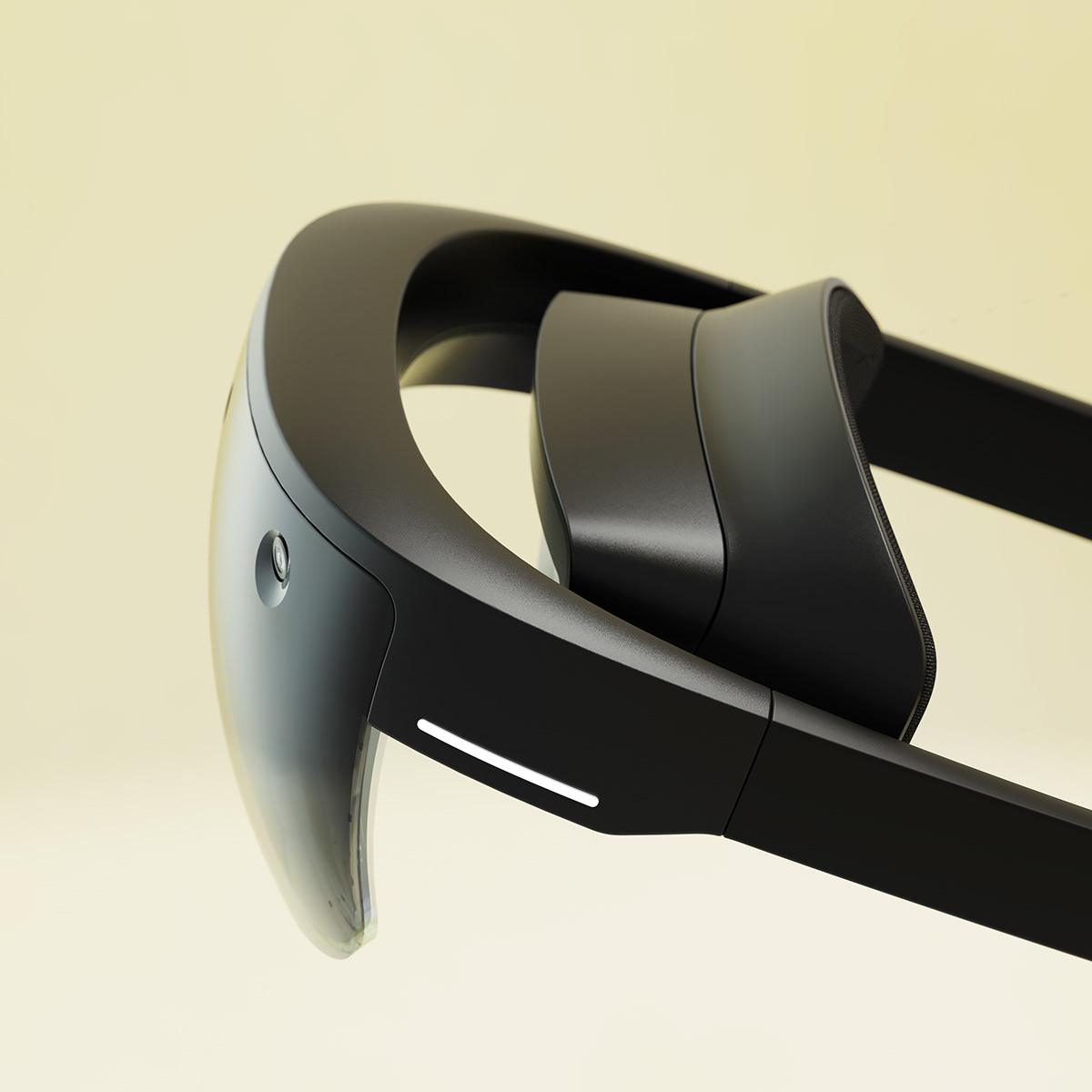
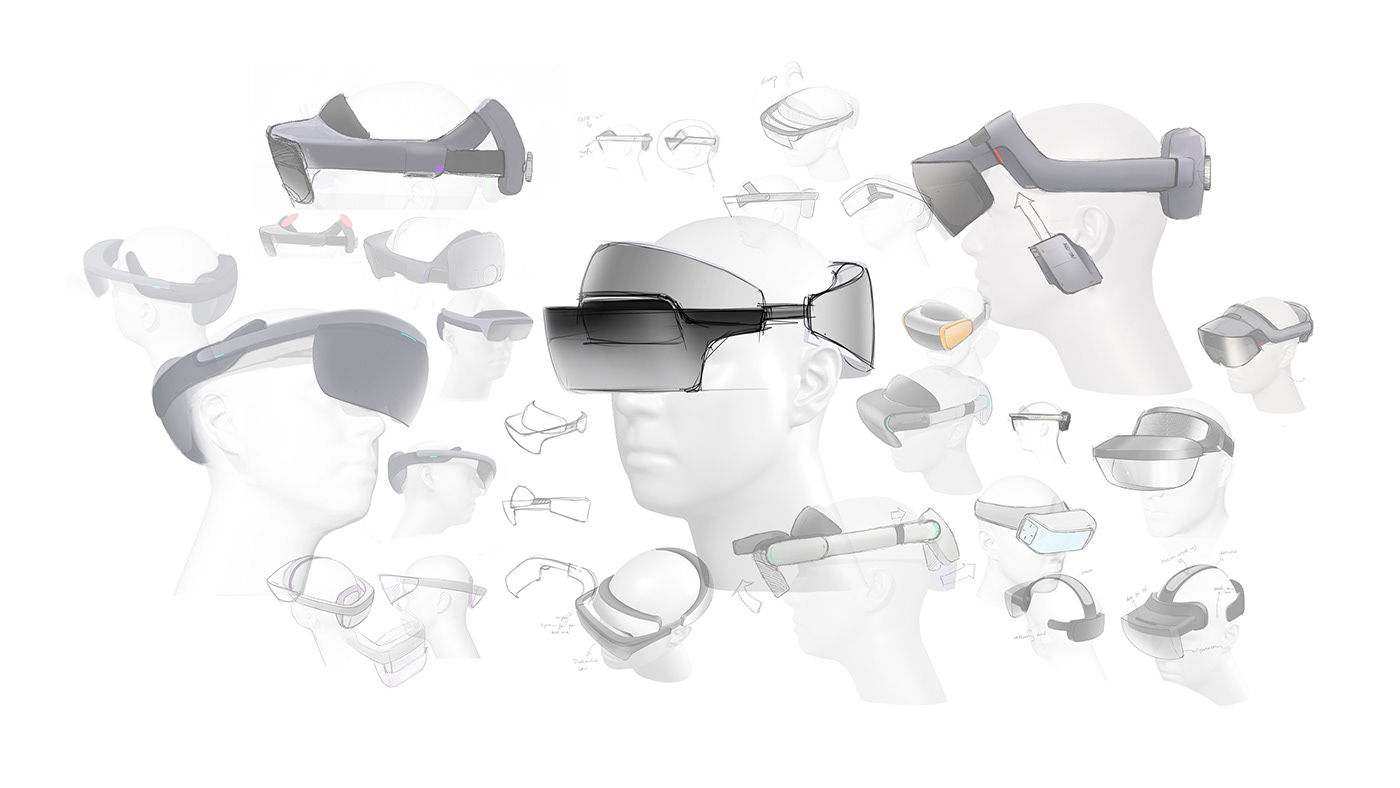
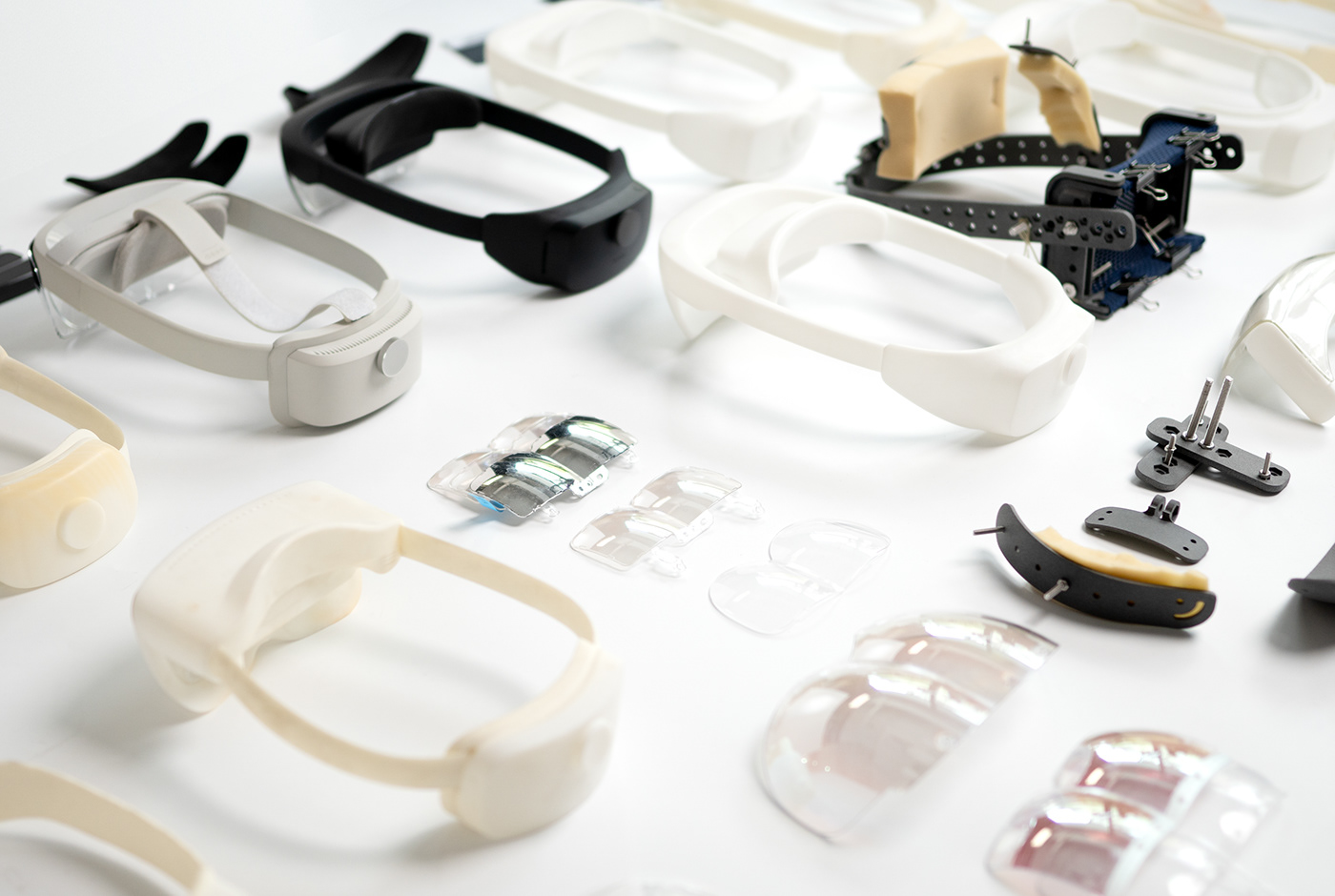
During the project, the LEAPX team conducted various styling explorations and extensive design validation through a multitude of physical prototypes.

The early-stage hollowed-out design concept.


Inspired by the mesh design of AirPods Max, we attempted to design and develop a suspended fabric support for back head to enhance breathability and distribute weight more evenly on the head. Several iterations of prototypes were created for testing. Unfortunately, due to limited time and resources, this concept was not incorporated into the final product.
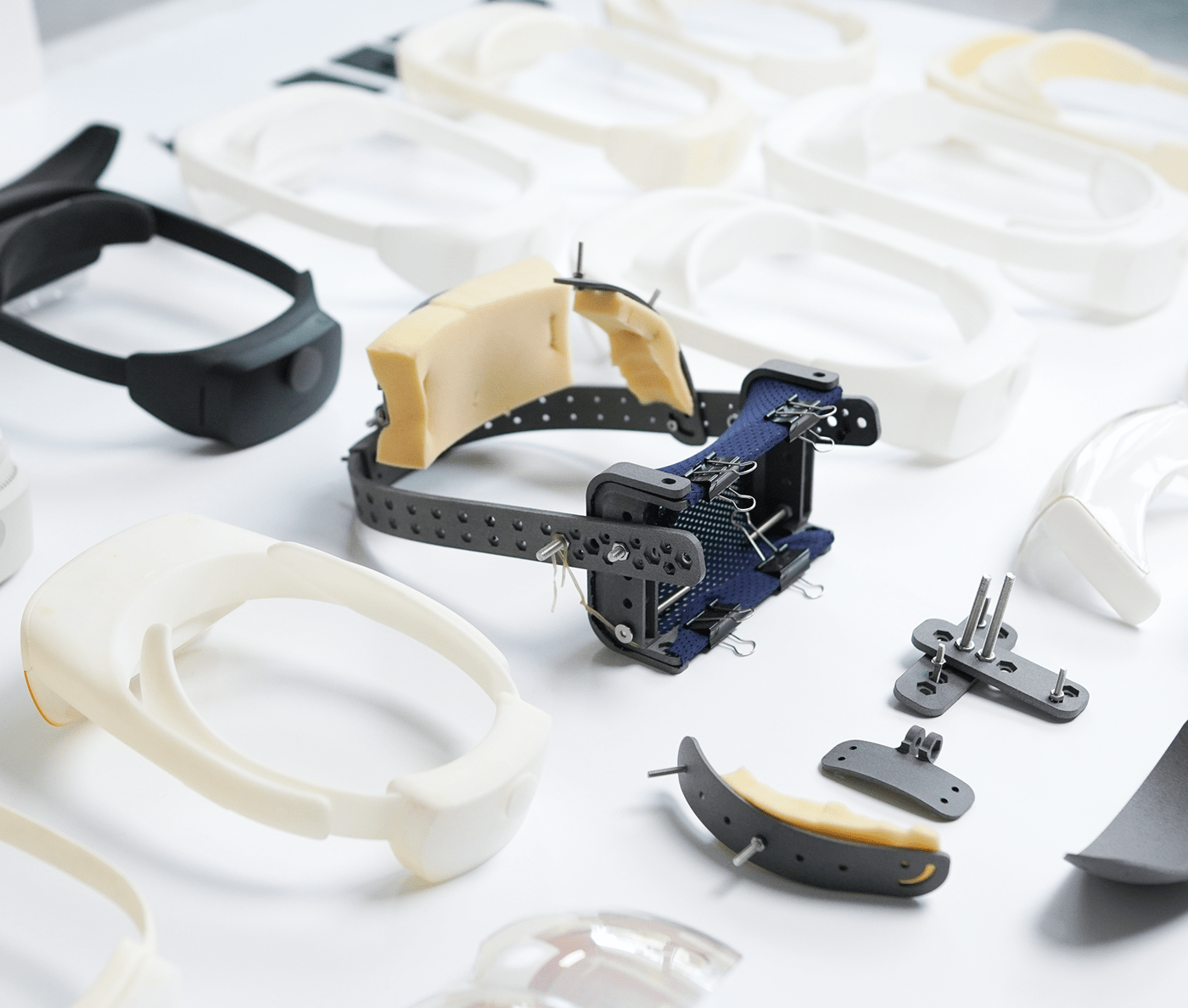

During this project, we had tried many mainstream AR headset at the time (2021) and came to the conclusion the AR tech is not ready for mass market yet due to its high cost and less than satisfactory user experience and is better suited for business and professional use. And the LEAPX AR might have the most balanced design among professional AR headsets that uses curved mirror reflection display.
We believe the technology will develop rapidly in the next few years, bringing new possibilities for consumer grade AR products. We look forward to participating in the next revolution of the industry, designing new generation of AR in the future.


Design Team
Feng Wei, Yumian Deng, Kaihuang Chen,
Yusen Wang, Siyoon Kim, Chenyu Ding.
LEAPX DESIGN
-
contact@leapx.design
-

